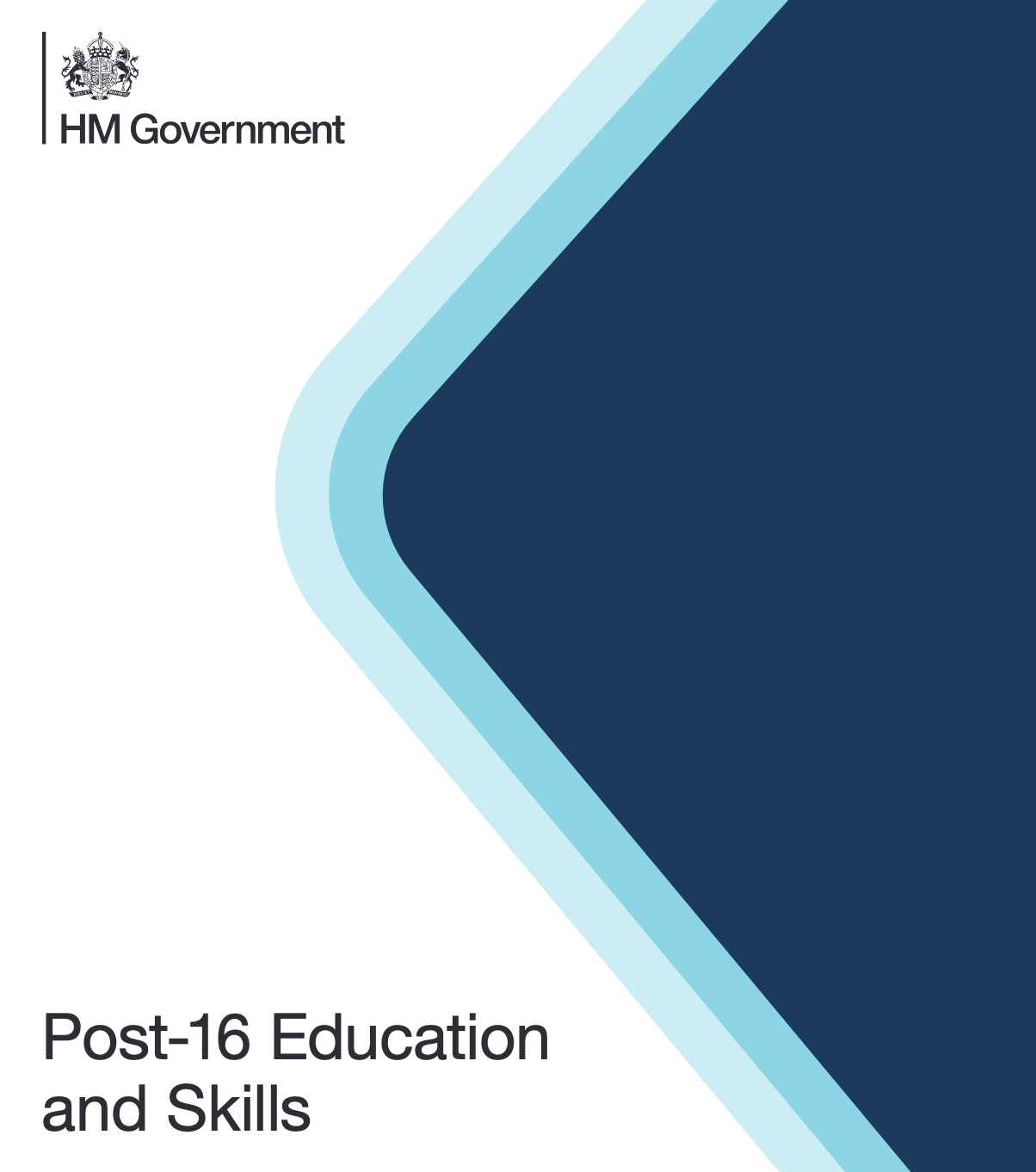
I recently sat on a panel at APSCo discussing the "new reality of recruitment." Setting the scene at the outset was stark. With 36 months of declining vacancies, 30% recruiter workforce reduction, and AI fundamentally changing how agencies operate. The sector grappling with whether this is cyclical or structural.
It's structural. And if you're running a training provider or college, you should be paying attention.
Recruitment businesses are the canary in the coal mine for the skills and training sector. They feel market shifts first. Hiring freezes, skills shortages, changing job roles, automation replacing entry-level positions. What's hitting them now will hit education providers within 18-24 months, if it isn't already.
On the panel, we kept circling back to one number: agencies currently spend about 60% of their gross margin on people. That needs to drop to 40% within two years, with the difference made up by AI and automation.
Not because agencies want to cut costs. Because they have to. JP Morgan grew every division by 10-20% last year while cutting headcount by 1%. The link between headcount and productivity has broken.
Training providers face the same pressure, just on a different timeline. When your employer clients are operating with leaner teams and AI-augmented workforces, they'll expect the same from you. The question isn't whether this happens. It's whether you're ahead of it or reacting to it.
What this means practically:
Your educator-to-learner ratios will come under scrutiny. Not because anyone wants worse outcomes, but because the market will expect you to do more with less. The providers figuring out how to use AI for admin, scheduling, basic queries, and progress tracking will create capacity for coaches to focus on high-value human interaction. Things such as mentoring, complex problem-solving, emotional support, and career guidance.
The ones who don't will either burn out their staff or become uncompetitive on price and/or service.
One of the starkest moments in the webinar came when Mike Chapman shared data: Microsoft cut 7,500 HR staff and replaced them with one chatbot. Accenture: 11,000 redundancies. PwC reduced graduate intake by 20%, didn't hire any in London this year.
These aren't low-skill roles. These are graduate-level, professional services positions. The middle is getting hollowed out.
What survives:
What doesn't:
For training providers, this creates a curriculum crisis. If you're preparing learners for jobs that won't exist in five years, you're setting them up to fail.
How many of your apprenticeship standards or vocational qualifications are training people for roles that are already being automated?
Here's the paradox: we're seeing redundancies and skills shortages simultaneously.
Blue-collar work is splitting. High-skill manual work (precision manufacturing, specialist trades) remains in demand. Low-skill volume work (warehouse, basic assembly) gets automated. The middle consisting of skilled trades where there's both demand and automation potential is the contested space.
White-collar work is splitting too. Junior knowledge work disappears. Senior advisory work becomes more valuable. But the pathway from junior to senior breaks down when the routine entry level work vanishes.
Training providers need to think about this progression problem. You can't just train people for senior roles when they have no on-ramp to build foundational experience.
The answer could look like:
Something else that came up in the webinar was personal brand outweighing company brand for most professionals.
Clients follow people, not agencies. A recruiter billing £800k on their own is becoming less or an outlier. The tools, the networks, the ability to operate as a one-person business have never been more accessible.
For training providers, this has two implications:
First, employability training needs to shift. It's not enough to teach technical skills and hope learners slot into corporate structures. You need to teach:
In the webinar, I argued that we're moving toward a classic apprenticeship model. One where knowledge is transferred from experienced practitioners to newcomers. This overriding mass graduate intakes. That puts more weight on individual credibility and relationship capital.
Second, your own staff face this. Your best coaches and subject matter experts could potentially operate independently. The ones with deep industry networks and strong personal brands have options. You need to make staying with you more attractive than going solo.
That's not just about money. It's about:
Agencies are discovering their traditional model which is origination-heavy, people-intensive, and low differentiation doesn't work anymore. Everything they do at the front end (sourcing candidates, screening CVs, basic matching) can be automated. The value sits at the relationship end: understanding unspoken needs, reading cultural fit, managing complex negotiations, providing strategic hiring advice.
Training providers face a similar unbundling.
Content delivery? Increasingly commoditised. Online courses, AI tutors, bite-sized learning platforms. The barrier to accessing information has collapsed.
Assessment? Being challenged. AI can evaluate a lot of what we currently pay humans to mark.
Credentialing? Under pressure. Employers increasingly care about demonstrable skill over certificates, especially when they can test for competency directly.
What remains valuable:
If your model relies heavily on information transfer and light on the above, you're vulnerable.
One of the more interesting threads from the webinar: small and medium employers are potentially more profitable clients than large enterprises for recruitment agencies.
Large companies have sophisticated talent acquisition teams, use AI extensively, run everything through PSLs with multiple vendors competing on price. Small companies don't. They need help, they'll pay for speed and quality, and they're often more loyal.
But most agencies chase the big logos because it looks impressive.
Training providers do the same thing. They chase large levy-payers, often at the expense of SMEs who'd be better clients: more flexible, more willing to co-design programmes, less bureaucratic, often more invested in individual learner success.
The counter-argument is volume. You can't scale on SMEs. Fair point. But if your business model requires constant high-volume, low-margin delivery with high learner-to-coach ratios and burned-out staff, maybe scaling that model isn't the answer.
Better to be sustainably profitable at smaller scale than perpetually stressed at larger scale, especially if the market is moving toward personalisation and away from commoditised mass delivery.
I see a lot of providers trying to be everything to everyone. On the APAR delivering 20+ standards despite being a small team. Makes sense on paper. More products equals more opportunities to win work.
In practise, it destroys you. Your coaches end up delivering across multiple standards, often without deep occupational competency. Your curriculum development is spread thin. Your go-to-market is unfocused because your BD team is targeting everyone and no one.
The recruitment sector learned this the hard way. Generalists get commoditised. Specialists build moats.
The best training providers I see are going narrow and deep:
When you specialise, you can afford to say no to work that doesn't fit. You're not desperate to hit targets by shoehorning any learner into any programme. You have the luxury of proper alignment. Right learner, right employer, right programme. This drives better outcomes, better retention, and sustainable growth.
The webinar had a recurring tension: everyone acknowledged change was necessary, but knowing and doing are different things.
Some providers will bury their heads and hope funding holds up. It won't. Political changes mean shifts in how levy and AEB are allocated. The conversation about value for money is only getting louder.
Here's what makes sense based on what's working in the recruitment sector:
1. Audit your operational efficiency Where does staff time actually go? If coaches are spending 60% of their time on admin, scheduling, chasing paperwork, that's your first target for automation. Not to cut costs, but to give them capacity for the high-value human work.
2. Build data infrastructure You need to know:
Most providers have this data somewhere. Few can access it easily or use it to drive decisions. AI can help analyse it, but you need the foundations first.
3. Rethink your value proposition Stop talking about qualifications and start talking about outcomes. Employers don't want training for training's sake. They want better staff, reduced recruitment costs, improved retention, mitigation of skill shortage risks.
Frame everything around that. It changes your sales conversations completely.
4. Invest in your people Your best coaches and subject matter experts are your only real differentiator. Everything else: content, systems, even brand can be replicated. The question is whether they want to stay with you.
That means:
The providers haemorrhaging staff right now are usually the ones that have neither invested in their people nor built operational efficiency. So staff are overworked, underpaid, and leaving for anywhere that treats them better.
5. Choose your lane You cannot be all things. Decide what you're brilliant at, double down on it, and be comfortable saying no to everything else. This is terrifying for most providers because it feels like leaving money on the table. But diffuse effort delivers diffuse results.
The education and training sector has a habit of talking around problems rather than naming them directly.
So here's the direct version: a lot of training providers are going to fail over the next 3-5 years. Not because they're bad people or lazy or incompetent, but because their business model doesn't work in the new environment.
The ones that survive will look different:
Recruitment is showing us this future right now. The question is whether the training sector watches and learns, or waits to experience it firsthand.
Bolt Search and Bolt Advisory work with training providers and employers navigating these transitions. If you want to discuss what operational efficiency, market positioning, or talent strategy looks like for your organisation, we're always up for a conversation.

